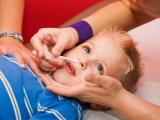Jun 4, 2010
Global H1N1 activity continues decline
The World Health Organization (WHO) today reported "active but declining" pandemic H1N1 transmission in parts of the Caribbean and Southeast Asia, with much of the rest of the world remaining quiet. The WHO also said the Southern Hemisphere is showing no evidence of the onset of the winter flu season but mentioned limited, localized pandemic flu activity in Chile. It also specified low but significant levels of predominantly seasonal H3N2 flu in several countries of East Africa.
http://www.who.int/csr/don/2010_06_04/en/index.html
Jun 4 WHO update
New Zealand infection rates surprise officials
An estimated 18% of the population of New Zealand were infected by pandemic H1N1 from November 2009 through March 2010, including 1 in 3 children aged 5 to 19 years and 1 in 4 preschoolers. Results of the study, commissioned by the country's ministry of health, showed far higher rates than expected. About 45.2% of infected individuals had no symptoms. Age was found to be the most important risk factor. The current prevalence of H1N1 immunity in the New Zealand population is estimated at 29%.
http://www.moh.govt.nz/moh.nsf/indexmh/influenza-a-h1n1-update-188-040610
Jun 4 New Zealand ministry of health release
One fifth of European vaccine used
Only about a fifth of the more than 179 million doses of H1N1 vaccine distributed in Western Europe have been used, the European Medicines Agency (EMA) said in a report. Three major drug companies accounted for the doses, with GlaxoSmithKline accounting for 131.7 million doses, Novartis with 36 million, and Baxter with 11.7 million. Safety concerns and milder-than-expected illness decreased demand for vaccine in some European countries, the report said.
Diagnostic kit effective for novel H1N1
A monoclonal antibody kit to detect the 2009 pandemic H1N1 virus by indirect immunofluoresce assay showed 100% agreement with the real-time polymerase chain reaction panel used by the Centers for Disease Control and Prevention. The kit, made by Diagnostic Hybrids, does not detect any of 14 seasonal H1N1 or H3N2 influenza prototype virus strains nor is it reactive with seven other respiratory viruses.
http://www.ncbi.nlm.nih.gov/pubmed/20519459
Jun 2 J Clin Microbiol abstract


















